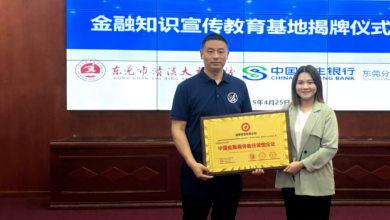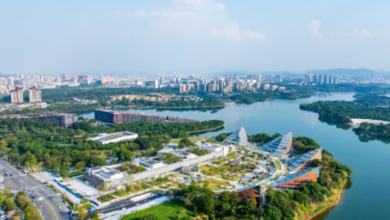Dongguan’s Low-Altitude Economy “Opportunity List”: Over 100 Demonstration Scenarios to Be Built Within a Year


Introduction: Dongguan’s Ambitious Low-Altitude Economy Plan
On July 3, 2025, Guangdong (Dongguan) held a significant event—the 2025 Low-Altitude Economy Application Scenarios Release Conference. During the conference, two critical documents were introduced:
- The List of Typical Application Scenarios for Dongguan’s 2025 Low-Altitude Economy
- The List of Opportunities for Dongguan’s 2025 Low-Altitude Economy
These initiatives highlight Dongguan’s commitment to positioning itself as a national leader in low-altitude economic innovation. The city aims to create over 100 demonstration scenarios within a year, focusing on five key sectors and 37 specific applications.
As someone who has followed China’s drone industry for years, I find Dongguan’s approach particularly strategic. Unlike other cities that focus solely on drone manufacturing, Dongguan is integrating low-altitude technology into manufacturing, logistics, urban management, and public services—making it a model for practical, large-scale adoption.
Key Sectors: Where Dongguan Seeks Innovation
The “Opportunity List” identifies five major sectors where businesses and tech providers can contribute:
1. Manufacturing Services
Dongguan, known as the “World’s Factory,” is looking for:
- Smart inspection drones & drone hangar providers (for automated factory checks)
- Certified drone maintenance companies (ensuring compliance and safety)
- Customized inspection solution integrators (tailored for industrial needs)
From my experience visiting Dongguan’s electronics factories, many still rely on manual inspections. Drones with AI-powered defect detection could revolutionize quality control, reducing costs by up to 30% in some cases.
2. Urban Operations
The city needs:
- City-wide drone traffic management platforms (to prevent airspace conflicts)
- Data processing & analytics firms (for real-time urban monitoring)
Imagine drones managing traffic flow or monitoring construction sites—this could significantly improve efficiency in a fast-growing metropolis like Dongguan.
3. Low-Altitude Logistics
With e-commerce booming, Dongguan is seeking:
- Logistics drone operators (VTOL and multi-rotor drones for deliveries)
- Smart dispatching systems (optimizing routes in real-time)
- Last-mile delivery solutions (secure drop-off points)
I’ve seen trials in Shenzhen where drones cut delivery times from hours to minutes. If Dongguan scales this, it could redefine logistics in the Greater Bay Area.
4. Public Services
For emergency and municipal needs, the city wants:
- Long-endurance, heavy-lift drones (for disaster relief)
- Precision airdrop systems (medical supplies delivery in remote areas)
During the 2024 floods in Guangdong, drones were crucial for delivering supplies. Dongguan’s plan ensures even faster response times in future crises.
5. Geographic Mapping
High-precision surveying demands:
- Advanced mapping drones & sensors
- 3D modeling software specialists
In my work with urban planners, I’ve seen how drone-based mapping can cut surveying time by 70%. Dongguan’s infrastructure projects will benefit immensely.
12 Key Dimensions: A Comprehensive Approach
Beyond sectors, Dongguan breaks down opportunities into 12 functional dimensions, including:
- Safety & Security (airspace management, anti-collision tech)
- Cargo Logistics (same-day delivery networks)
- Emergency Services (firefighting, search & rescue)
- Agriculture & Energy (crop monitoring, power line inspections)
This structured approach ensures that every aspect of the low-altitude economy is addressed systematically.
Why Dongguan? The Competitive Edge
Dongguan’s 2024 Low-Altitude Economy Development Plan already set a three-year roadmap. Now, with the 2025 “Opportunity List,” the city is:
✅ Leveraging its manufacturing strength (30,000+ factories need drone solutions)
✅ Building infrastructure (5G coverage, drone ports, and regulatory sandboxes)
✅ Encouraging public-private partnerships (subsidies for pilot projects)
When I spoke with a Dongguan tech official last year, they emphasized that the city doesn’t just want to be a drone producer—it wants to be the best user of drone technology.
Conclusion: A Model for China’s Low-Altitude Economy
Dongguan’s plan is one of the most actionable I’ve seen. By targeting 100+ real-world use cases in a year, the city ensures rapid commercialization. For businesses in drone tech, logistics, or AI, this is a golden opportunity to pilot innovations at scale.
If Shenzhen is the “Silicon Valley of drones,” Dongguan might soon be known as the “best place to deploy them.”
Key Takeaways:
✔ 5 sectors, 37 scenarios, 12 dimensions—Dongguan’s low-altitude economy is diversifying fast.
✔ Manufacturing and logistics are the biggest near-term opportunities.
✔ Over 100 demonstration projects will roll out in 2025—early movers will have an advantage.
For drone startups and investors, Dongguan’s “Opportunity List” is worth serious attention.





